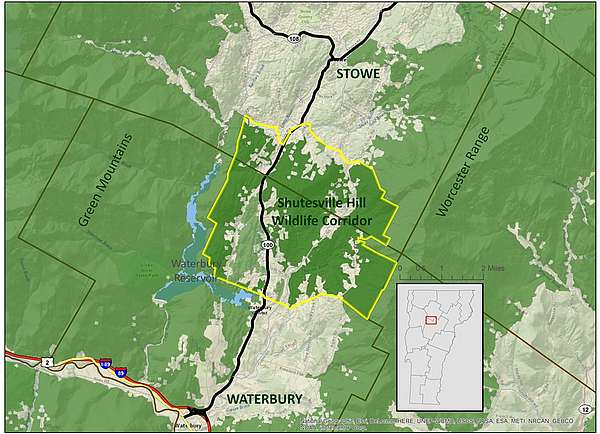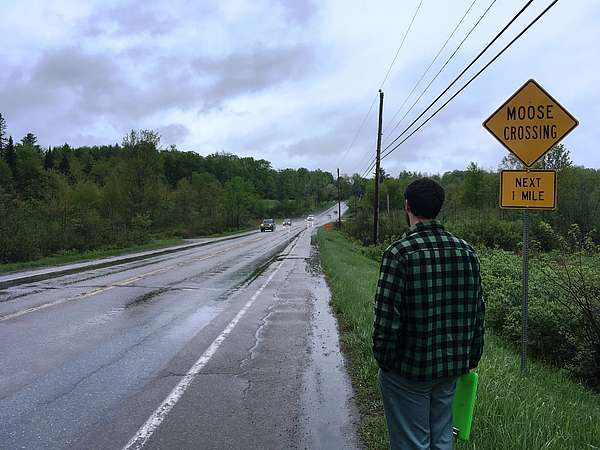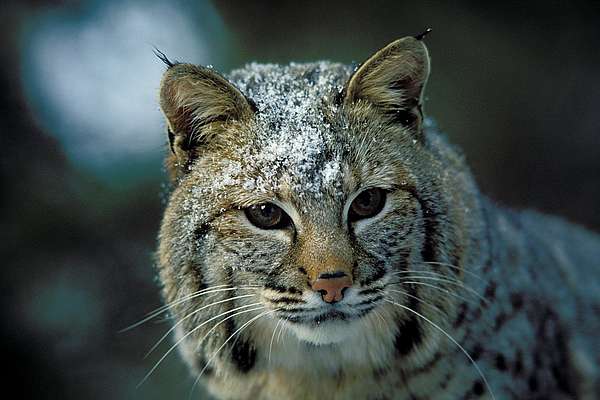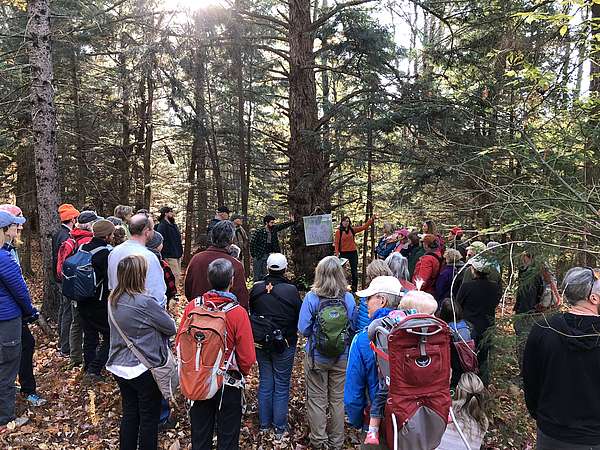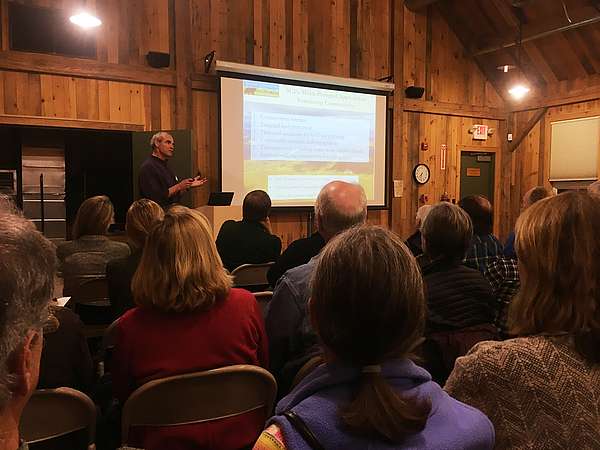Up until recently, you wouldn't have found Shutesville Hill on a map of Waterbury or Stowe.
What was an old timer’s name for the easy-to-miss height of land along Route 100 at the Waterbury-Stowe town line, is now the namesake for one of the most critical wildlife habitat corridors in Vermont.
Now, biologists and conservationists have put the Shutesville Hill Wildlife Corridor on the map and are working to ensure that it stays open and safe for wildlife moving through the Green Mountains for generations to come.
Connecting the Green Mountains and Worcester Range: A Critical Pathway
The Shutesville Hill Wildlife Corridor is the only largely forested pathway remaining for wildlife to move between the larger habitat blocks found in the Worcester Range to the east and main Green Mountain chain to the west.
Wildlife corridors are bands of forest habitat that are large and intact enough that they provide animals with an important bridge between larger blocks of habitat.
These corridors allow otherwise isolated wildlife populations and individuals to connect, interact, reproduce, and find refuge, which is essential for all species’ survival – especially wide-ranging animals such as black bear, moose, and bobcat.
The Shutesville Hill Wildlife Corridor includes habitat features such as forests, streams, and wetlands, as well as houses, farms, businesses, and roads.
Fragmentation, or the breaking up of forest cover within the corridor due to additional human development, is the top threat to the corridor’s future viability for wildlife movement.
Keeping the Corridor Open & Safe
An effort has been underway to study and protect the corridor since 2010. What started as an informal collaboration between the Vermont Fish & Wildlife Department and local conservation groups including the Stowe Land Trust and Stowe and Waterbury Conservation Commissions, has grown to include additional key players such as the Nature Conservancy, Vermont Land Trust, and Vermont Department of Forests, Parks & Recreation, and Agency of Transportation.
Over the past year, these, local, regional and statewide organizations have been working together through the Shutesville Hill Wildlife Corridor Partnership to assess and map the corridor and to identify effective conservation strategies.
One of the key strategies is raising awareness about the corridor and what property owners and community members can do to help keep it open and safe. In October, the Partnership teamed up with landowners to offer a community walk through a critical part of the corridor. Almost 50 people attended.
Nearly 70 people turned out for a follow-up community presentation at the Green Mountain Club Visitors Center in early December.
Speakers covered the basics of wildlife corridors, discussed the regional and international importance of the Shutesville Hill Wildlife Corridor, shared the results of an analysis that identified the most important parts of the corridor, and provided suggestions on what people can do to help out.
Bridget Butler, Program Director for Cold Hollow to Canada and proprietor of Bird Diva Consulting, also shared the inspiring story of similar work to protect another critical wildlife pathway along the Vermont-Quebec border.
What Can I Do to Help?
Key recommendations for what people can do to help out with keeping the Shutesville Hill Wildlife Corridor open and safe include:
- Ask about conservation options for your property within the corridor if you are interested in permanently protecting your land. You can talk with Caitrin Maloney from Stowe Land Trust, Bob Heiser from Vermont Land Trust, or any of the partners.
- Share observations and images of wildlife on your land in the corridor. Contact Allan Thompson from Waterbury Conservation Commission to learn more or if you're interested in hosting a game camera on your land.
- Talk with your forester about your interest in maintaining high-quality habitat for wildlife living on and moving through your property. Don't have a consulting forester? Contact your County Forester: Rick Dyer, Lamoille County or Dan Singleton, Washington County.
- Let your Planning Commission, local representatives, and town officials know that the Shutesville Hill Wildlife Corridor is important to you and that you would like to see additional steps taken through local planning and zoning to protect this critical habitat.
- Financially support the organizations collaborating on the Shutesville Hill Wildlife Partnership. We can't do this important work without your membership and donations.
The Shutesville Hill Wildlife Corridor Partnership includes the Waterbury Conservation Commission, Stowe Conservation Commission, Stowe Land Trust, Vermont Land Trust, The Nature Conservancy, Vermont Fish and Wildlife Department, Vermont Department of Forests, Parks, and Recreation, and Vermont Agency of Transportation.
